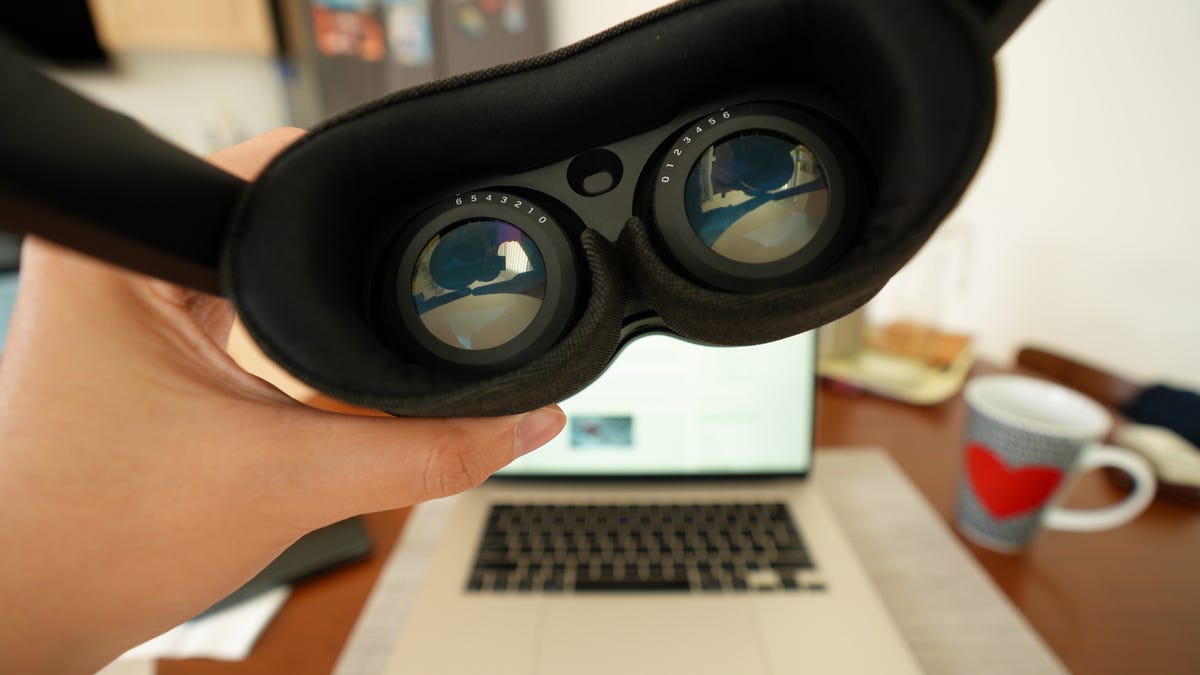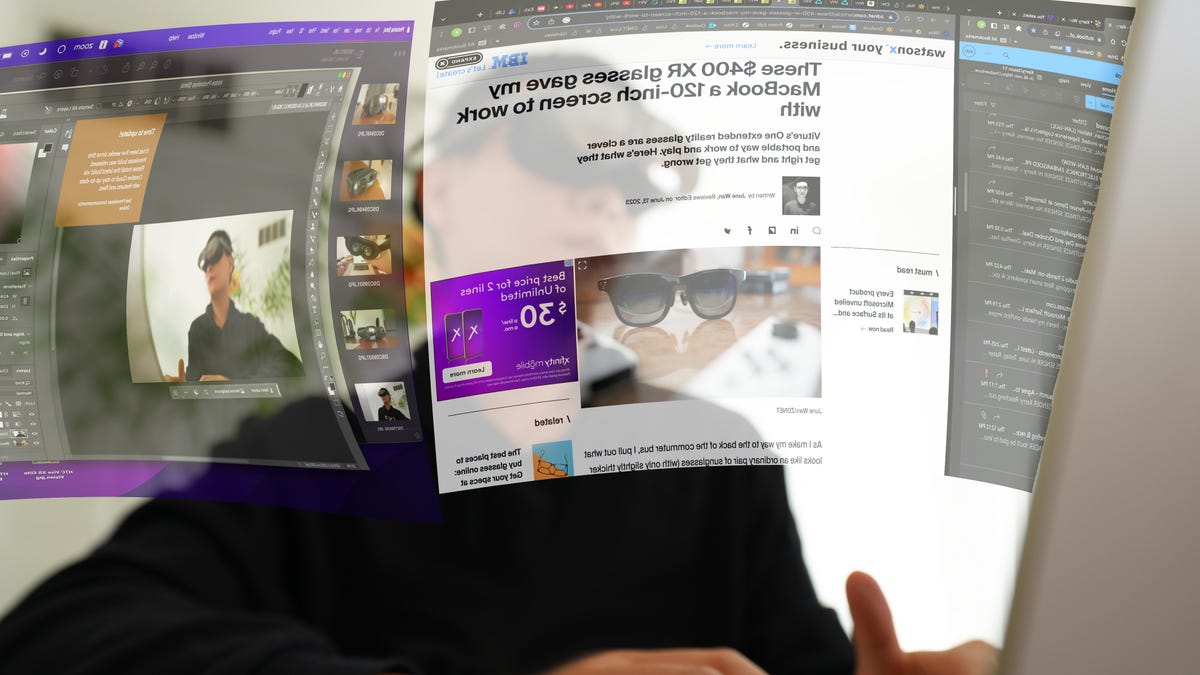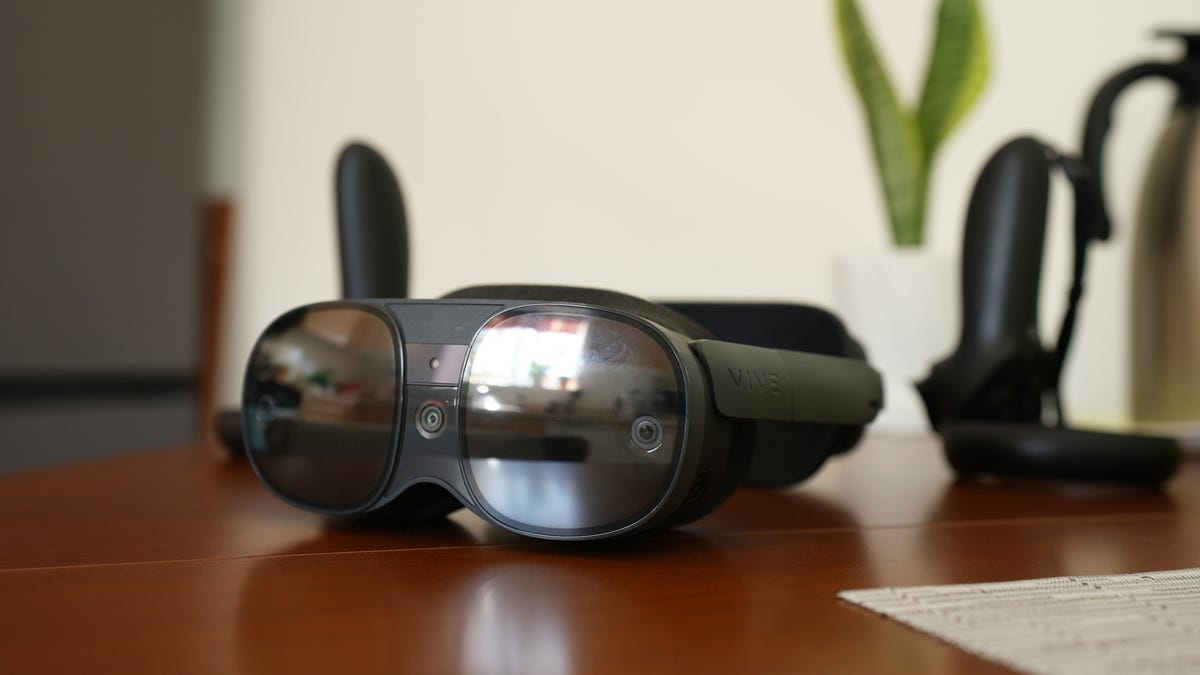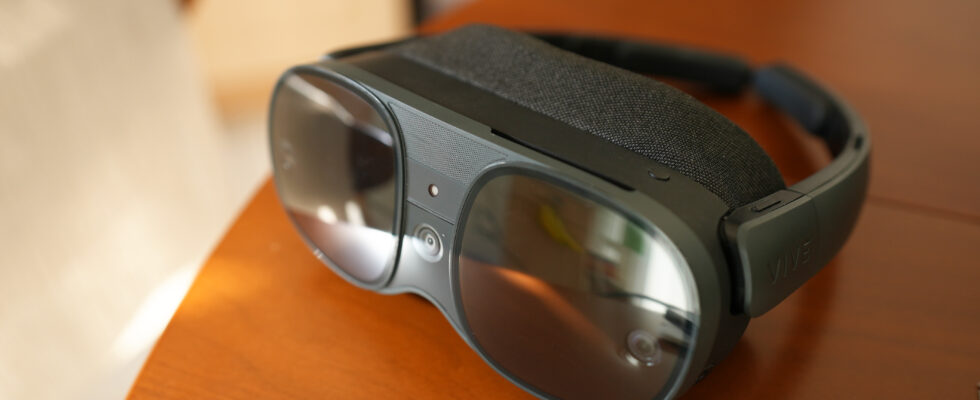I recently moved into a new house and decided to leave most of my furniture behind. I ordered a new desk and office chair. Furthermore, HTC was kind enough to let me test the Vive XR Elite for many weeks. And this while my new furniture was arriving. So here is a productivity test with a VR headset, without a desk and without a chair.
The big question of comfort
I’ll start with fit and finish, because if there’s anything that makes a VR headset a success or a failure, it’s comfort. With the Vive XR Elite, HTC is tackling comfort in three ways:
- The battery holder, when attached, serves as a counterweight to the front panel.
- An overhead strap takes some of the pressure off the front and back of the head.
- When lounging in bed or on a couch, detaching the battery holder allows you to wear the Vive XR Elite like a pair of glasses.
Pay attention to the battery holder
After trying these three combinations, I found the headset to be most comfortable when the battery holder was attached and secured, and the top strap was pressed just firmly enough to keep the headset from sliding under my eyes.
A few reviewer friends who also tested the Vive XR Elite suggested I not use it in glasses mode, and I can see why. When all the pressure comes from the front, imbalance can be a rather disorienting experience if your use of VR involves A body movement.
Even for my activities, which mostly revolved around using the Immersed app to project my MacBook’s screens, turning my head from side to side caused the headset to move here and there. I therefore advise, like many others, to only use glasses mode when you are standing still or when carrying the Vive XR Elite from one place to another.

June Wan/ZDNET
Be careful with glasses
This is a good time to mention that the Vive XR Elite cannot be worn over glasses. The soft, padded support that comes with the headset is just too tight to fit medium to large glasses, which is not the case with competing headsets like the Meta Quest 2 and Quest Pro.
As I wear corrective lenses, this limitation bothered me a lot. But this is where the IPD (inter-pupillary distance) setting comes into play. They range from 0 to -6, which is not the most accommodating, given that I had to reach a maximum of -6 to get the clearest visual experience. But it was enough for me to be able to make out the text in the virtual world. I know plenty of other people whose vision is much worse, and HTC’s system probably won’t be up to the task.
Now for the fun part: using the Vive XR Elite as a workstation. You may have seen demonstrations of this system before: a person puts on a VR headset and works on digital monitors. That’s basically what I did, thanks to the HTC headset and the Vive XR Elite screen. Unlike Virtual Desktop, Immersed is free and has some benefits, like support for five monitors (for PC and Mac).
I avoided headaches
The syncing process with my 16-inch MacBook Pro wasn’t the most efficient, as I had to constantly glance in and out of the headset to remember the lengthy pairing code that I had to type on my laptop, and a companion app was needed to make everything work. But once my MacBook launched into the headset app, I started typing and browsing as usual. Except there was no physical monitor or desk in front of me.

Please excuse my attempt to depict Immersed on the Vive XR Elite. June Wan/ZDNET
Since my workflow primarily revolves around text entry, being able to discern numbers, letters, and symbols is crucial. Visually, the Vive Even with multiple windows open, the corners of my vision did not become blurry or have a vignette effect.
You also won’t feel the shakes that are more common on headsets with 60Hz refresh rates, so the movement of looking from window to window felt more like the real thing. I probably saved a headache or two because of this.
Typing text and using the controllers is not easy
On Immersed, I was able to adjust the sharpness of the screencast and move it closer or further away from me. This was all done through hand and finger tracking, as the Vive XR Elite controllers were too large to constantly pick up after typing on the laptop’s keyboard.

June Wan/ZDNET
The hand tracking worked surprisingly well, with the headset reliably detecting my inputs when I pinched my index finger and thumb or swiped my finger up and down. Since my usage was less intensive, I had no trouble doing without the physical controllers and just navigating the software using finger gestures.
HTC says the Vive XR Elite has a battery life of around two hours per charge. I averaged about an hour and a half before the status indicator turned red. It’s possible to attach the headset with a USB-C cable, and that’s what I did most of the time when working on my virtual desktop.
ZDNET’s purchasing advice
Mobility is the real selling point of the HTC Vive XR Elite; the freedom to store the headset in a small tumbler-sized case and take it with you anywhere is what separates it from the competition.
If you’ve landed on this article – and read to this point – there’s a good chance you’re cross-shopping between the $1,400 Vive XR Elite and the $1,200 Meta Quest Pro. For performance and application variety, Meta remains the favorite. For portability and a less aggressive VR experience in collecting your personal data, opt for the HTC.
Source: “ZDNet.com”
